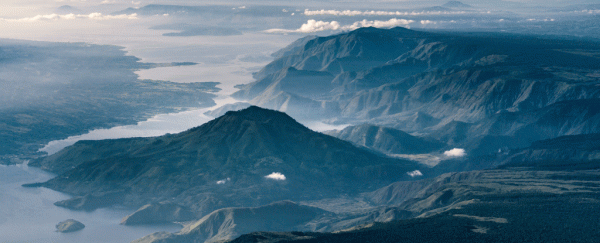Some of the key warning signs that geologists typically look out for ahead of a supervolcanic eruption may not actually be present in every case, according to a detailed new study of the Toba volcano in Sumatra, Indonesia.
The findings suggest that the gigantic eruptions from Toba some 840,000 years ago and 75,000 years ago were not preceded by a sudden influx of magma into the volcano's reservoir. Instead, the magma collected steadily and silently ahead of the blasts.
Crucially though, the second super-eruption needed less than half the time for magma to build up than the first – 600,000 years rather than 1.4 million years – because of the gradual increase in temperature of the continental crust around the magma reservoir.
"This is a 'vicious circle' of eruptions," says geologist Ping-Ping Liu from Peking University in China. "The more the magma heats the crust, the slower the magma cools and the faster the rate of magma accumulation becomes."
To reach their conclusions, the team analyzed the chemistry of zircons around Toba, minerals produced by explosive volcanic eruptions. Uranium decays into lead inside zircon, so the researchers were able to use mass spectrometry scanning to determine the age of the minerals.
That gave them timelines of both the eruptions themselves and the buildup of magma preceding them. Researchers can also use the same technique to gauge how much magma might have already collected in a reservoir.
Specifically, the researchers estimate that around 320 square kilometers (124 square miles) of magma could be lurking under Toba Lake today – a caldera created by previous eruptions and since filled in by snow and rain. An island sits at its center, pushed up by the magma deep below the surface.
"We can see that this island is gradually increasing in height, indicating that the volcano is active and that magma is accumulating underneath," says Liu.
Scientists estimate that there are around 5-10 volcanoes around the world capable of a super-eruption – one that would catastrophically affect the global climate. Toba volcano could be one of these, and if one of these devastating events is on the way, then we need to know about it.
It's thought that the supervolcanic eruptions from Toba could have blanketed the whole of South Asia in a substantial layer of ash, with some studies putting forward the hypothesis that the most recent caused a decade-long volcanic winter where temperatures plunged across the globe.
How humanity would respond were such an event to happen again – everything from food supplies to population migrations – isn't clear, but we might not get a huge amount of notice when the next supervolcanic eruption is on the way, either.
"Our study also shows that no extreme events occur before a super-eruption," says earth scientist Luca Caricchi from the University of Geneva in Switzerland. "This suggests that signs of an impending super-eruption, such as a significant increase in earthquakes or rapid ground uplift, might not be as obvious as pictured in disaster movies by the film industry."
"At Toba volcano, everything is happening silently underground, and the analysis of the zircons now gives us an idea of what is to come."
The research has been published in PNAS.
